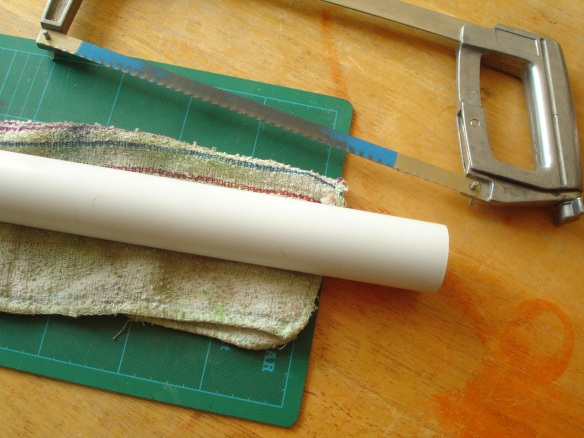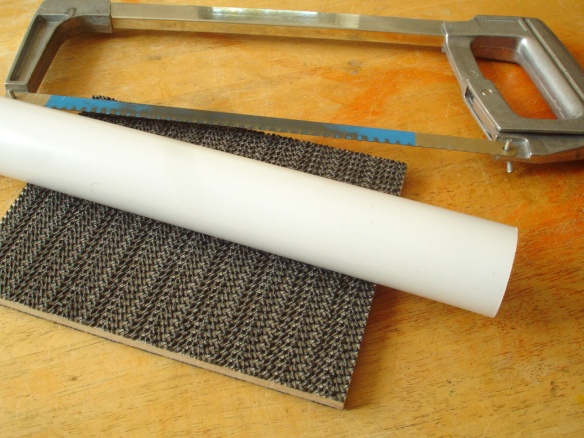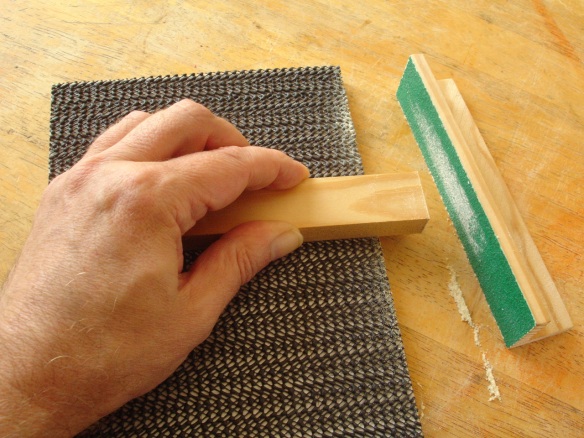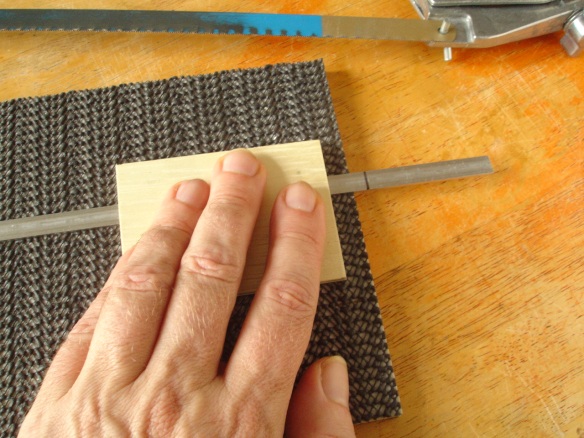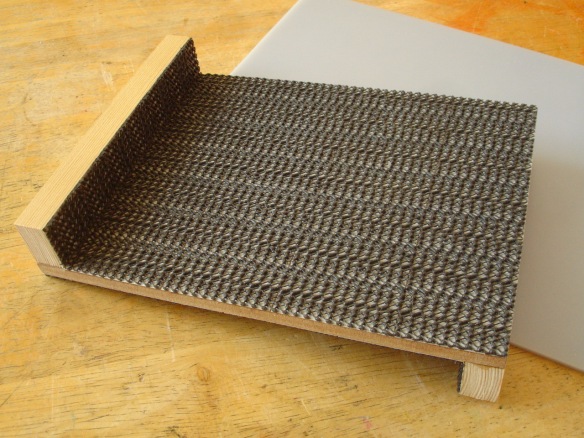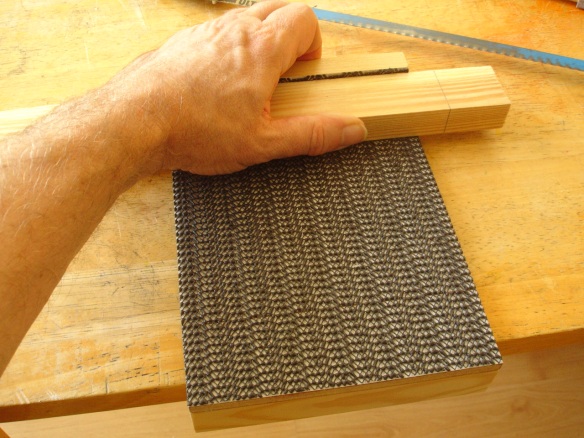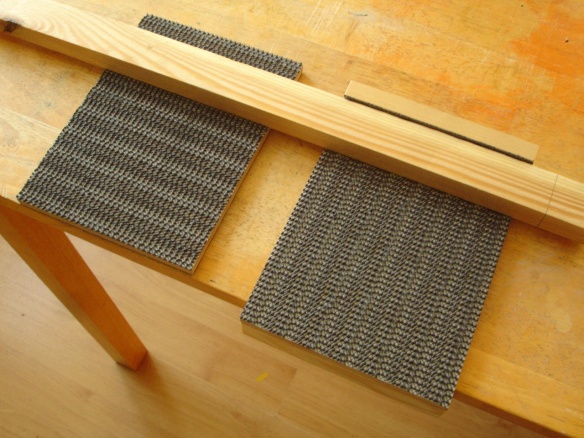
I would imagine you’ve all seen this material or something similar .. textured rubber sheets for placing underneath rugs or mats to stop them sliding about. I’d bought this version from Poundland a few weeks ago for another idea which in the end didn’t work and so it was pure coincidence that I had it still lying around when I had to cut a lot of Pvc piping for another project. I’ve never bought myself a proper bench vise .. that probably says something about me, though I don’t know what .. and in the past I’ve made do with something like the setup below, the pipe slightly raised on a cutting mat with perhaps some kind of coarse cloth underneath for extra grip. It’s always worked, more or less, but it’s never been comfortable. Cutting mats grip the table well enough for normal knife cutting but rather lose it when the force acts across them .. such as when sawing.
So I tried a few cut pieces of this grip liner underneath and pressed down firmly in position as I would normally do, and I have to say that it worked incredibly well! Although there was a little give, it felt as if the pipe was in some kind of vise. By the way, as you’ve seen .. for once I prefer the American spelling as opposed to ‘vice’!
I could have just left it like that and it would have been enough of an improvement, but I felt I was onto something and wanted to make a proper ‘gripping block’. I clad both sides of a piece of 8mm MDF with the material, using double-sided carpet tape to stick it down. The carpet tape needs to fill the surface, otherwise the grip material may ruck when the block is used. I thought initially of using rubber glue to attach the material but the carpet tape holds it well enough in place and it means that it can be easily replaced.
I call this a ‘gripping board’ rather than a ‘cutting board’ or mat because I hadn’t intended it to be cut ‘on’ so much, it’s more about helping to hold things steady while cutting slightly ‘off’ the edge of it, but there’s no reason why it couldn’t be used for both especially if a softer base such as chipboard is used. I found that the board gripped anything, round or flat .. plastic, wood or metal. It was just as beneficial when sanding ends or edges, as below.
I tried various thin strips or rods of metal which I’d hitherto only been able to cut using a small metal vise I have .. and it was, again, almost like having a vise! I find it bothersome to set up the vise every time I want to do this and it’s difficult to keep the surface of the metal undamaged.
I found it worked even better after I made a small ‘finger block’ surfaced with the grip fabric which meant that I could press down more firmly without crooking the fingers uncomfortably.
I’ve always thought I should make a bench hook so this was a good time to try my own augmented version! I just used a piece of laminated chipboard I had (this one 15cm wide, 20cm long) attaching end-pieces of timber (25mm x 15mm) firmly screwed. The screw-heads need to be countersunk!
The ‘bench hook’ is so-called because it hooks along the front edge of a work table to provide steadiness while sawing .. at least on the forward stroke! They have been around for centuries, and making one often used to be the first project in school woodworking classes. Here, below, are a couple of manufactured ones .. from http://www.badaxetoolworks.com
If I’d bothered to look at examples like these before I very hastily put mine together I would have made the timber end-pieces a little short on the right side (for right-handers) as shown above, so that the block could be sawn ‘on’ .. but I wasn’t using the right kind of wood for this anyway.
Nevertheless my idea of covering the working surfaces on both sides with the grip fabric turned out to be a significant improvement, because it gave even more steadiness on both forward and back strokes. Since it is only attached with double-sided tape the fabric can be easily replaced if it gets too damaged.
I also found it very useful to have both the bench hook and the simple mat for supporting lengths of wood while cutting.

